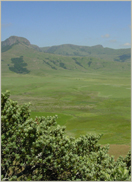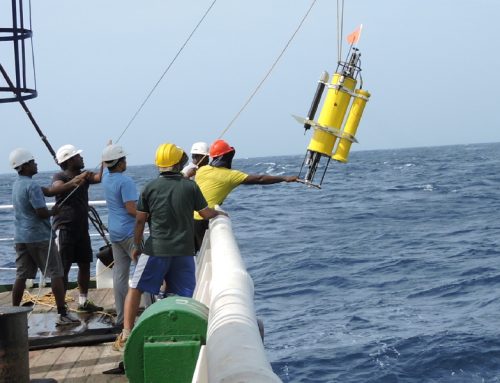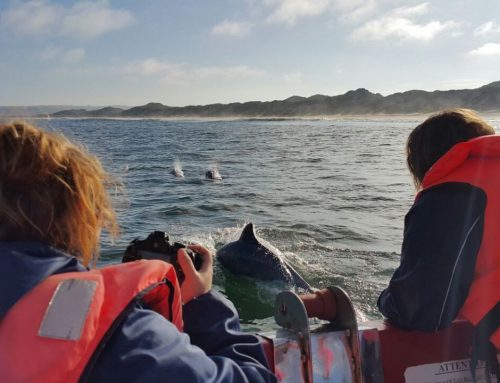 The unprecedented ‘land grab’ for mining in South Africa poses a direct threat to the headwaters of the Vaal, Tugela, Usuthu and Pongola river systems. This key water production area spanning the high altitude grasslands between KwaZulu Natal, Mpumalanga and the Free State, provides clean, potable water for Gauteng, Mpumalanga and KwaZulu Natal, including several major power stations. Yet it is being threatened by coal mining.
The unprecedented ‘land grab’ for mining in South Africa poses a direct threat to the headwaters of the Vaal, Tugela, Usuthu and Pongola river systems. This key water production area spanning the high altitude grasslands between KwaZulu Natal, Mpumalanga and the Free State, provides clean, potable water for Gauteng, Mpumalanga and KwaZulu Natal, including several major power stations. Yet it is being threatened by coal mining.
“Surely the headwaters of river systems should be set aside and should be protected from unsustainable land use initiatives such as mining,” says Angus Burns, Programme Manager for the Enkangala Grassland Project, spanning 1.6-million hectares in this region, which the WWF Nedbank Green Trust started funding nine years ago.
It is mind-boggling that coal mining, which is known to pollute water, could even be considered here when water is such a rare, precious and threatened commodity in South Africa. Yet hundreds of ill-conceived coal prospecting and mining applications have been submitted for this very region. If this is not bad enough, provincial moratoriums on prospecting have been lifted with a resultant increase in new applications exacerbating the situation.
In a bid to protect the region the WWF Nedbank Green Trust is now funding the post of a Mining Engagement Officer. Applications are open and the appointed person’s duties will include researching how many prospecting and mining applications in the area are being sought or have been approved; assess and respond to the applications and their Environmental Management Plans (EMPs) or Environmental Impact Assessments (EIAs); engage with mining companies and, most importantly, engage with government to profile the water, food and biodiversity priorities of the region.
The ultimate goal of this appointment is to try and persuade government to demarcate this region as a ‘no go’ priority zone. Extensive conservation assessments and the findings of the WWF-SA ‘Coal and Water Futures’ report presented at COP17 will be drawn on to support this goal, which will be of direct benefit to the millions of downstream water users.
“The WWF Nedbank Green Trust is incredibly forward-thinking in funding this post because strategic intervention is critical. This is our country’s water supply and it stands to be destroyed,” says Burns who will oversee the Mining Engagement Officer.
Over the past nine years Burns has shown extraordinary commitment to the conservation of the Enkangala grasslands, which have a rich biodiversity and food production value. “Our Biodiversity Stewardship programme has been highly successful amongst many of the landowners here,” says Burns, explaining that most of the land in the Enkangala Grassland Project region is privately owned and includes the first Protected Environment in Mpumalanga, declared in 2010. Called the KwaMandlangampisi Protected Environment it is a critical water catchment area for South Africa that includes the headwaters of the Pongola and Assegaai River, which feeds the Heyshope Dam and provides clean water for national power generation.
The land surrounding all the headwaters in this region is predominantly used for sustainable, rangeland livestock farming, and the farmers (many of whom have been here for five and six generations), are proactive about environmental conservation as well as being significant employers.
On the community front, the first Biodiversity Agreement ever to be signed between land reform beneficiaries and provincial conservation authorities in South Africa is in the Enkangala region.
“I need to be clear that we are not pitting conservation against mining,” continues Burns. “We recognise that responsible mining, as embodied by the Nedbank Green Mining Awards, is a key contributor to economic growth and employment. But mining at the source of key water production areas does not make any sense; not economically, socially or environmentally. It needs to be avoided and strategically addressed.”
What would be the cost to South Africa to put in artificial measures of water purification if the headwaters are polluted?
“There is nothing out there that is economically affordable; it would cost billions of rands. We are looking at a catastrophe in the next 10-15 years if we run out of clean, drinkable water,” says Burns, adding that mining is relatively short-term and that it is post closure when some of the biggest pollution problems occur.
“We already have almost 6000 abandoned or ownerless mines in South Africa. Add another 1000 possible coalmines in Enkangala in the next 10 years and you are destroying the backbone of water production. We need only look to existing mines in the region, and their affect on communities to see where we would be heading.”
A small rural community outside of Paulpietersburg in KwaZulu Natal, for example, draws their water directly from the stream in this area. An abandoned coal mine here has polluted the stream with acid mine drainage and the adjoining wetland is now dead.
Small mine or big mine the damage to people and the environment is irreversible. Too many of the mining companies, especially the smaller ones, are dangerously dismissive of specialist environmental input, whereas the larger players are generally more attentive, Burns adds.
“It’s a very complex situation but the decisions made by the government when it comes to mining has to be in the best interests of people and the environment. We understand there will be coal mining until we can realise a fossil-fuel-free future, but in the meantime strategic intervention is imperative. Without this, fifty years from now if there are still people around, they will look back and say ‘that was the age of stupid’.”
For more information about the Mining Engagement Officer post, contact:
Angus Burns, Enkangala Grassland Project Programme Manager
P O Box 21106, Newcastle, 2940
Cell: +27 084 400 1234
Direct: +27 034 318 6158
Fax: +27 086 517 4073
Email: egtproject@mweb.co.za




